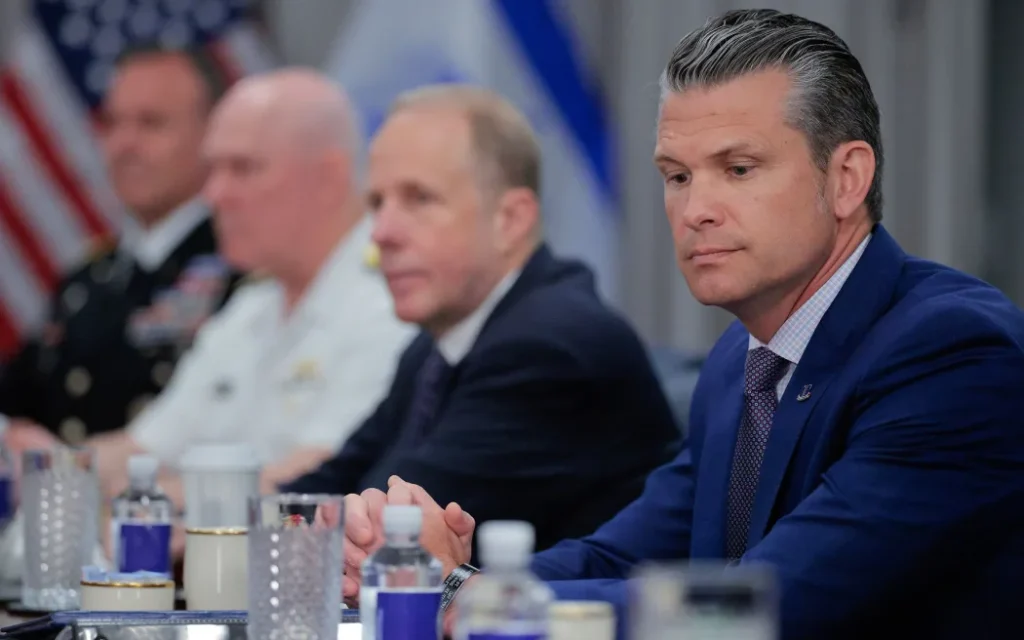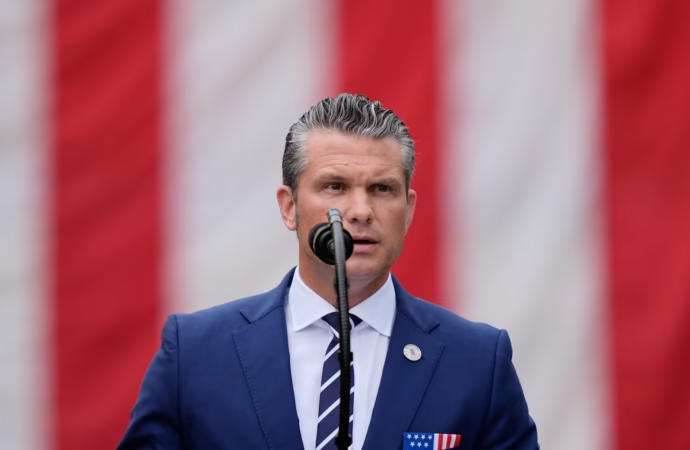In a move that has jolted the Pentagon and reverberated through U.S. military ranks, Defense Secretary Pete Hegseth has ordered hundreds of the country’s top military officers generals and admirals of one-star rank or higher to convene next week at the Marine Corps base in Quantico, Virginia. The directive arrives without any public explanation, sparking
In a move that has jolted the Pentagon and reverberated through U.S. military ranks, Defense Secretary Pete Hegseth has ordered hundreds of the country’s top military officers generals and admirals of one-star rank or higher to convene next week at the Marine Corps base in Quantico, Virginia. The directive arrives without any public explanation, sparking alarm, confusion, and speculation across the U.S. defense establishment. This unscheduled grand gathering is unprecedented in scale and secrecy. Typically, senior commanders across the services meet periodically with the defense secretary or through videoconference. But pulling together literally hundreds of flag officers many stationed overseas to one site on short notice breaks with precedent.
To understand the significance of this summons, one must see it against the backdrop of a series of sweeping, controversial decisions that Hegseth has already made since assuming his role.
Personnel purges and reshuffles
Over preceding months, Hegseth has relieved several high-ranking officers of their posts without public explanation including the Navy’s top officer, and key legal and intelligence command figures.
Reduction of the general/admiral corps
In May, Hegseth issued a bold directive: reduce the number of active-duty four-star generals and admirals by 20 percent, and cut broadly across all general and flag officer ranks at least 10 percent, with additional proportional cuts in the National Guard. Though the cuts were framed publicly as efficiency and “flattening the bureaucracy,” many within the military saw them as destabilizing and politically motivated.
Renaming the Pentagon to the “Department of War”
Hegseth has also pushed for rebranding the Department of Defense as the “Department of War,” a symbolic but provocative shift. To date, Congress has not approved the formal name change, but the rhetoric has stoked fears about militarism and politicization.
Strategic shifts and emphasis on homeland defense
Observers believe Hegseth is preparing to release a new National Defense Strategy (NDS) that pivots priority away from overseas, forward-deployed competition (e.g. China) and toward homeland defense, border security, and internal threats. The timing of the Quantico meeting may align with rolling out that new doctrine — but the abruptness and scale of the recall make clear that Hegseth intends to deliver it in person.
Taken together, the meeting order is less a surprise than the culmination of months of internal disruption a bold show of authority from Hegseth meant to reassert control over a military leadership he views as complacent, fragmented, or overprotected by tradition.

Reactions Inside the Ranks
Inside the Pentagon and among command circles overseas, reactions range from sheer bewilderment and frustration to cautious acceptance tinged with concern.
- Disorientation and operational disruption
Many commanders, particularly those stationed abroad in conflict zones or remote regions, have complex schedules, active operations, and logistical constraints. The sudden summons forces them to choose between leaving their posts or scrambling to attend—despite the availability of secure virtual briefings. - Security and risk concerns
Gathering so many top officers in one location is inherently risky from intelligence leaks and target vulnerabilities to disruption of command continuity. Several sources told media they couldn’t recall a time when so many senior leaders were assembled like this without a public agenda. - Political overtones and morale anxiety
Some see in this meeting a purge in the making a test of loyalty, or a warning that underperformers or nonaligned officers may find themselves removed. The opaque nature of the order has rattled morale in certain echelons. “People have no idea what it means,” one insider reportedly said. - Acceptance and acquiescence
Others view it as the new reality of the civil-military relationship under Hegseth’s stewardship. Leaders who’ve survived prior purges may view attendance as nonnegotiable not optional.
What Might Be on the Agenda
Since no official agenda has been disclosed, much of the media speculation centers on possibilities informed by Hegseth’s recent behavior and strategic intentions:
Release and buy-in for the new National Defense Strategy
Many expect Hegseth to unveil or explain the upcoming NDS in person, aligning top brass to the pivot toward homeland defense, internal threats, and possibly a scaled-back forward posture.
Structural consolidation and command reductions
Hegseth may propose merging commands or repositioning leadership for instance, combining U.S. European Command and U.S. Africa Command, or consolidating other overlapping regional authorities.
Enforcement of loyalty and alignment
The gathering may function as a test, filtering out resistant or misaligned commanders and realigning the officer corps with Hegseth’s worldview. Media commentary suggests he may use this to send a message: fall in line, or exit.
Operational readiness and re-prioritization
Hegseth might direct new deployments, reassign missions away from older theaters, or shift funding priorities toward domestic defense, border operations, asymmetric threats, or intelligence/agency oversight.
Administrative edicts and accountability
Given his prior personnel moves, Hegseth could use the meeting to issue mandates on performance review, vetting, social media conduct of officers, internal loyalty oaths, or broader oversight measures.

Dangers and Risks of Hegseth’s Strategy
While bold in scope, the move carries serious risks political, institutional, and strategic.
- Erosion of nonpartisan military tradition
U.S. military institution has long prided itself on being apolitical. By summoning and potentially reshaping the senior ranks on short notice, Hegseth risks further politicizing the officer corps. - Blunting operational continuity
Pulling veteran commanders from active theater responsibilities could degrade readiness or oversight in important zones. - Backlash from rank-and-file or Congress
Should the meeting be perceived as a purge or ideological test, it could spark backlash from Congress, veterans’ groups, or subordinates concerned about fairness and professionalism. - Security vulnerability
Having so many high-profile officers in one location is a tempting target for intelligence operations, physical threats, or leaks. - Strategic surprise
Adversaries may interpret the move as internal chaos, offering them opportunities to act while U.S. command is distracted.
What to Watch in the Coming Days; Will an official agenda or press release follow? Will President Trump or White House officials appear at the meeting? Which officers notably do not attend, and whether any resign or are relieved thereafter. Whether Hegseth uses this to unmask personnel purges, loyalty tests, or major reassignments. How Congress, especially defense and oversight committees, react whether they demand transparency. Whether future strategic documents (e.g. NDS) or funding shifts align with a homeland-first posture.

















Leave a Comment
Your email address will not be published. Required fields are marked with *